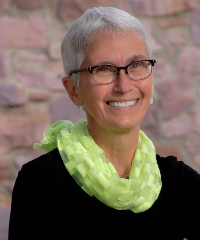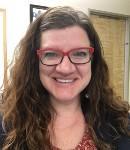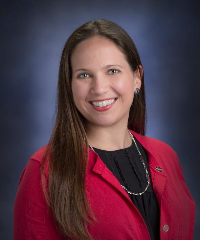GISN & STEM Professional's Blog - GLOBE International STEM Network
GISN & STEM Professional's Blog
The GLOBE International STEM Network (GISN) and STEM Professional's Blog is an online collaborative effort where scientists associated with GLOBE post their thoughts, comments, and philosophies about a variety of science topics.
GLOBE strongly encourages positive and productive discussions to further advance the scientific understanding of all involved with The GLOBE Program.
Filter By:
Blogs List
Alissa S. is a high school student from New Jersey. She is currently participating in the 2021 STEM Enhancement in the Earth Sciences Mosquito Habitat Mapper summer research intern cohort. Hi! My name is Alissa, and I’m an intern at the NASA SEES Earth Explorers/Mosquito Mappers internship. At this internship, we do research, and that research is based on GLOBE Land Cover and Mosquito Mapper data that we collect. One of the major projects in the internship is to make five mosquito traps and experiment with those traps (by varying one characteristic throughout the traps), logging each ...
Read More »
Posted in:
GLOBE friends, The 2021 virtual Annual Meeting is only a day away! The Evaluation Working Group members are excited to share with you all the resources developed by this group during the past years, from 2014 to present. These resources can be found at : https://www.globe.gov/globe-community/people/globe-working-groups/evaluation On this webpage, you can find: Surveys for protocol training in atmosphere, hydrology, soils, and land cover A survey for students' attitudes towards science A presentation about what the group does and how evaluation can benefit the GLOBE program ...
Posted in:
On 15 April 2021, Rosalba Giarratano and I were joined by Jillian Anderson (teacher) and Andrew Constantinescu, Alexandra Quiroz, and Ilhum Haque (students) from the Lexington School for the Deaf to learn about American Sign Language (ASL) and some science words in ASL. We were also joined by Lisa Dennett, an ASL interpreter. Here is a recording of the video (make sure to turn on the closed captioning!): And, if you would like to download the slides, those are here . Thank you so much for presenting with us!
Posted in:
Diversity, Equity, and Inclusion:
DIVERSITY, EQUITY, AND INCLUSION
Rahil V. is a high school student from Maryland. He was part of the 2020 STEM Enhancement in the Earth Sciences Mosquito Habitat Mapper summer research intern cohort. This past summer I attended the SEES Virtual Mosquito Mappers Internship, changing my life. I suppose "life-changing" is often used arbitrarily to describe a great experience, but I can assure you, I do mean life-changing. I entered the summer wary of a virtual internship; after all, how useful could zoom calls and a virtual classroom be? Within the first week, I was blown away by the competent mentors, resources, and ...
Posted in:
Two projects have adopted the GO Mosquito Habitat Mapper tool as a way to obtain data for scientific analysis. The GLOBE Mission Mosquito Campaign plays an official role in a research project funded by the National Science Foundation: Citizen Epidemiology: Designing and Connecting Next-Generation Cyber, Biological, and Citizen Science Systems for the Surveillance and Control of Mosquito-Borne Diseases . The project PI is Dr. Ryan Carney, University of South Florida. To create an automated larva identification using artificial intelligence, many images of mosquito larvae are needed- from ...
Posted in:
Every time you take a cloud observation, the NASA GLOBE Clouds team matches your observation to satellite data. Why do we do this? Your view of clouds is from a different perspective than what is observed from a satellite. Satellites look down at clouds and see the top. When you make your observation, you are looking up towards the sky and seeing the bottom of the clouds. When there is a match, scientists then have a top-down view of clouds from a satellite and a bottom-up view from your spot. When you mix these two views together, you have a more complete picture of the sky. ...
Posted in:
Curriculum:
EDUCATION RESEARCH
SCIENCE AND MATH
STEM
GLOBE Science Topics:
BACKYARD SCIENCE
CLIMATE
CLIMATE CHANGE
DATA INCLUDED
GENERAL SCIENCE
GLOBE PROTOCOLS
EARTH AS A SYSTEM
EARTH SYSTEM SCIENCE
SCIENTIST SKILLS
Investigation Areas:
ATMOSPHERE
EARTH AS A SYSTEM
News Topics:
REGIONS
Primary Audience:
ALUMNI
COUNTRY COORDINATORS
PARTNERS
SCIENTISTS
STUDENTS
TEACHERS
TRAINERS
The NASA GLOBE Clouds team highlights cloud observers Hilde Fålun Strøm (Norway) and Sunniva Sorby (Canada), who created Hearts In The Ice to call attention to all the rapid changes occurring in the polar regions due to the changing climate. These citizen scientists made history last year by being the first women to overwinter solo in the high Arctic. They spent 12 consecutive months without running water or electricity at a remote trappers cabin called “Bamsebu” in Svalbard, Norway. While they were there, they made numerous GLOBE cloud observations as ...
Posted in:
Curriculum:
LANGUAGE CULTURE AND ARTS
STEM
GLOBE Science Topics:
BACKYARD SCIENCE
CLIMATE
CLIMATE CHANGE
DATA INCLUDED
GENERAL SCIENCE
EARTH AS A SYSTEM
EARTH SYSTEM SCIENCE
SCIENTIST SKILLS
GLOBE Working Groups:
SCIENCE WORKING GROUP
EDUCATION WORKING GROUP
Investigation Areas:
ATMOSPHERE
EARTH AS A SYSTEM
News Topics:
COMMUNITY LETTERS
NEWS BRIEFS
Primary Audience:
ALUMNI
COUNTRY COORDINATORS
PARTNERS
SCIENTISTS
STUDENTS
TEACHERS
TRAINERS
The NASA GLOBE Clouds team is continuously working with scientists around the world finding ways that cloud observations from citizen scientists impact the most. As we find new ways of using the data, we want to remind you how important each part of your cloud report is to the scientific community. All cloud observations can help with big questions such as the link between clouds and climate. Dr. Patrick Taylor is an atmospheric scientist at NASA Langley Research Center in Hampton, Virginia. In the Clouds and Earth’s Climate video , Patrick discusses how he studies clouds to ...
Posted in:
Curriculum:
ASSESSMENT AND EVALUATION
EDUCATION RESEARCH
SCIENCE AND MATH
STEM
GLOBE Science Topics:
BACKYARD SCIENCE
CLIMATE
CLIMATE CHANGE
GENERAL SCIENCE
GLOBE PROTOCOLS
EARTH AS A SYSTEM
EARTH SYSTEM SCIENCE
SCIENTIST SKILLS
GLOBE Working Groups:
SCIENCE WORKING GROUP
EDUCATION WORKING GROUP
Investigation Areas:
ATMOSPHERE
EARTH AS A SYSTEM
Learning Activities:
ATMOSPHERE AND CLIMATE
News Topics:
COMMUNITY LETTERS
NEWS BRIEFS
Primary Audience:
ALUMNI
COUNTRY COORDINATORS
PARTNERS
SCIENTISTS
STUDENTS
TEACHERS
TRAINERS
Student Research Reports:
STANDARD RESEARCH REPORT
Teacher's Guide:
INVESTIGATION AREA DOCUMENTS
Each cloud observation submitted using the GLOBE Observer app or through The GLOBE Program is compared to data from multiple satellites. A satellite match is when satellite data is identified that corresponds to a cloud observation. For orbiting satellites the observation must be within 15 minutes before or after a satellite’s overpass. Geostationary satellites, like the GOES satellites, are always observing the same location. If you are in the United States, you are likely to get a satellite match to a GOES satellite. These satellites are sending data every 15 minutes. As long ...
Posted in:
Curriculum:
SCIENCE AND MATH
STEM
GLOBE Science Topics:
BACKYARD SCIENCE
CLIMATE
GENERAL SCIENCE
GLOBE PROTOCOLS
EARTH AS A SYSTEM
EARTH SYSTEM SCIENCE
SCIENTIST SKILLS
Investigation Areas:
ATMOSPHERE
EARTH AS A SYSTEM
News Topics:
COMMUNITY LETTERS
NEWS BRIEFS
Primary Audience:
ALUMNI
COUNTRY COORDINATORS
PARTNERS
SCIENTISTS
STUDENTS
TEACHERS
TRAINERS
The NASA GLOBE Clouds team at NASA Langley Research Center is working with NASA scientist Dr. Bill Smith to use GLOBE Cloud observations made by people just like you to solve the Terminator Problem!
Wait, what? Well, the Solar Terminator or twilight zone is that line that separates the daylit side of a planet from the dark night side. The image on the left is an example. It was taken from the International Space Station as it crossed the terminator on April 17, 2019 as it orbits 254 miles above the Gulf of Guinea on Africa’s mid-western coast.
...
Posted in:
Curriculum:
EDUCATION RESEARCH
SCIENCE AND MATH
TECHNOLOGY
STEM
GLOBE Science Topics:
BACKYARD SCIENCE
CLIMATE
CLIMATE CHANGE
DATA INCLUDED
GENERAL SCIENCE
GLOBE PROTOCOLS
EARTH AS A SYSTEM
EARTH SYSTEM SCIENCE
SCIENTIST SKILLS
Investigation Areas:
ATMOSPHERE
EARTH AS A SYSTEM
Learning Activities:
ATMOSPHERE AND CLIMATE
EARTH AS A SYSTEM
News Topics:
COMMUNITY LETTERS
NEWS BRIEFS
Student Research Reports:
STANDARD RESEARCH REPORT
INTERNATIONAL VIRTUAL SCIENCE SYMPOSIUM REPORT
U.S. STUDENT RESEARCH SYMPOSIA (SRS)
In May 2020, citizen scientist Carmen Mandel met two major milestones: she marked her one-year anniversary of being a GLOBE Observer and she single-handedly expanded the Clouds satellite match data by 36%. Carmen uses GLOBE Observer to record clouds 2-3 times daily every time she gets a notification that a NASA satellite is overhead. She sends her data to GLOBE, but then she records her observation in her own clouds journal. When she receives an email from NASA Langley Research Center matching her observation to satellite data, she adds that to her journal as ...
Posted in:
GLOBE Science Topics:
BACKYARD SCIENCE
DATA INCLUDED
EARTH SYSTEM SCIENCE
GENERAL SCIENCE
Investigation Areas:
ATMOSPHERE
CLOUDS
Primary Audience:
ALUMNI
COUNTRY COORDINATORS
SCIENTISTS
STUDENTS
—
20 Items per Page










